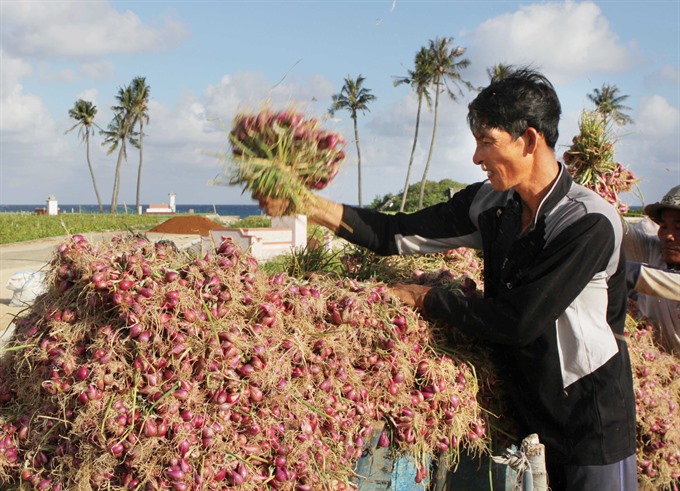 Society
Society

After the 2017-2018 spring-autumn garlic harvest 15 days ago, farmers of Lý Sơn island district in the central province of Quảng Ngãi are preparing for a new onion crop but there is one thing in short supply, sea sand.
 |
| A farmer in An Hải Commune, Lý Sơn District in the central province of Quảng Ngãi harvests garlic. —VNA/VNS Photo Phương Hoa |
QUẢNG NGÃI – After the 2017-2018 spring-autumn garlic harvest 15 days ago, farmers of Lý Sơn island district in the central province of Quảng Ngãi are preparing for a new onion crop but there is one thing in short supply, sea sand.
This crucial component is the farming business has been exhausted from the sea bed, while the demand for sand to improve cultivation has seen the price rise. Now it is up to VNĐ200,000-210,000/cu.m, an increase of VNĐ20.000 from two months ago, Thanh Niên (Young People) newspaper reports.
Mai Thị Chi, a farmer at An Hải Commune said: "Due to insufficient supply, sometimes growers have to wait several days to buy enough sand to improve the soil.”
To collect the sand at the bottom of the sea, divers have to go through many difficult stages. In previous years, there was plenty, but not anymore.
Up to three workers head about 400m out from the coastline in boats towing rafts. Then they dive to the sea bed some 30m below using tubes to breath in search of good sand.
It takes around four hours underwater to raise 40cu.m of sand.
Dương Minh Trí, a farmer An Hải Commune also said every year for around 1,000sq.m of garlic and onion, he family needed around 12cu.m of sand.
But because it is in short supply, this year not all of his crop will be covered in sand.
"Each year there is only one garlic crop, so we are willing to invest, but because of the sand shortage, it will be difficult. Lack of white sand is affecting the productivity of onion, garlic but we bear it," said Trí.
At Lý Sơn’s boat-anchoring area, there are 10 sand rafts that can mine 200cu.m of sand a day.
Meanwhile, with 300 hectares of garlic production area, farmers need tens of thousands of cu. m.
“The current source of sand on the island district is exhausted, the supply is not enough to help the local production,” said Trí.
Nguyễn Văn Trương, owner of a sand raft in Đông Village, An Hải Commune said "Every day can only gather around four rafts of sand, with the volume of about 20cu.m, so it is not enough white sand to provide for onion production.”
Additionally, price increased because of the increase of gasoline prices, labour costs, transportation cost.
Garlic farmers in the island had a 2017 – 2018 spring garlic bumper crop with both high price and productivity.
The island district now has nearly 330 hectares of garlic and onion cultivation land, with an average yield of about 8-10 tonnes per hectare. The total yield was estimated at 3,000 tonnes of garlic. So the amount of white sand used to grow garlic on the island was huge.-- VNS